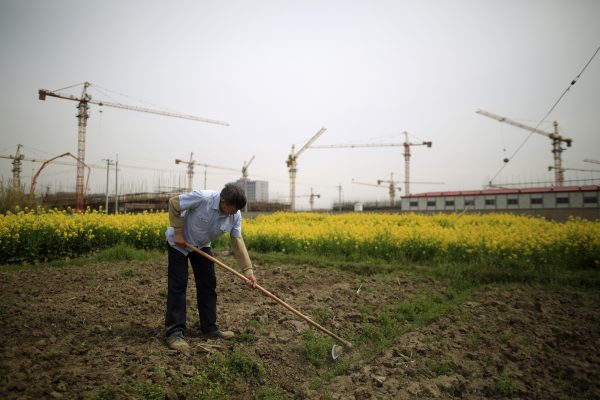Broadly speaking, there are three paths the Chinese economy can go down.
First, current circumstances could continue. This is not an ideal scenario. Continued monetary easing to stimulate investment could worsen structural imbalances, hampering economic growth. During the global financial crisis, the dramatic expansion of government investment and great easing of money supply in China boosted growth only in the short run. Economic growth weakened shortly afterwards, showing the decreasing effectiveness of stimulus policies.
In the above circumstances, future economic growth is likely to weaken to 5.3 per cent in 2016–20 — missing the government’s target of doubling GDP in 2020 from its 2010 level. Then, between 2021 and 2030, structural adjustment and technological progress is likely to raise the growth rate to 5.5 per cent per annum.
Second, the trends of various factors after 2015 could continue in the same way as those in scenario one, but with no adjustment to monetary policy. The leverage ratio is likely to shoot up quickly, exceeding 260 per cent in 2020. With a rapid rise in the leverage ratio, commercial banks’ non-performing loans will accumulate and may eventually exceed the limit that banks and the government can handle. A financial crisis then becomes imminent.
This crisis scenario could lead to an overall stagnation for the economy between 2019 and 2021. With some lag, the investment slowdown during the crisis would reduce capital and human capital growth over the longer term. Urbanisation would also slow and household consumption would be seriously affected.
This would lead to GDP growth around 2.9 per cent on average between 2016 and 2020. There could be two to three years of stagnation or negative growth during this period. From 2021 to 2030, the GDP growth could recover to 4.4 per cent, but by 2030, the growth rate would be expected to fall back to around 3 per cent.
Finally, it is possible that the government will push through reforms and structural rebalancing to put the economy on a healthy development path. These reforms would include: monetary policy and government actions aimed at deleveraging and lowering of financial risks; improved income distribution through reforms to lift the consumption rate and lower the savings and investment rates; and government reform to lower administrative costs and promote market competition. The other conditions in this scenario are the same as those in the baseline scenario.
Given the excessively high current savings and investment rates, the emphasis of macroeconomic policy should be redirected from stimulating investment to improving public services, social security systems and income distribution. This would support rather than counteract the necessary rebalancing of the demand structure between investment and consumption.
Reform and adjustment in the above three areas would have a positive impact on medium- and long-term economic growth. But deleveraging and shedding ‘zombie firms’ would have a negative impact on growth performance in the short and medium term. The latter effect is assumed to lower the growth rate by 0.5 per cent during the period 2016–20 and continues in the first few years of the period 2021–30 to lower the average growth rate by 0.2 per cent.
The combined result of the above positive and negative results of reform is that the growth rate between 2016 and 2020 increases from the baselines scenario of 5.3 per cent to 6.2 per cent. Growth would then accelerate to 7.5 per cent from 2021 to 2030 after the downward pressure on economic growth is overcome. The growth rate under this scenario is higher than commonly expected. This could be achieved not by stimulus policy, but rather by efforts to implement reforms and structural rebalancing.
Whether or not China realises its potential and reaches its goals depends heavily upon the future of the economic reform agenda. The forces that delivered growth in the past won’t be able to sustain it future. It is now up to the policymakers to decide which path to go down.
Yixiao Zhou is a Lecturer of Economics at the Curtin Business School.
Wang Xiaolu is Deputy Director and Senior Fellow at the National Economic Research Institute, China Reform Foundation, Beijing.
This article is a digest of the authors’ chapter from the publication for the latest China Update, which was held at the ANU on Friday 22 July. A free e-book is available here.

